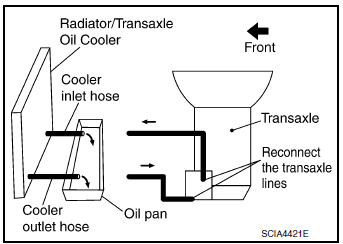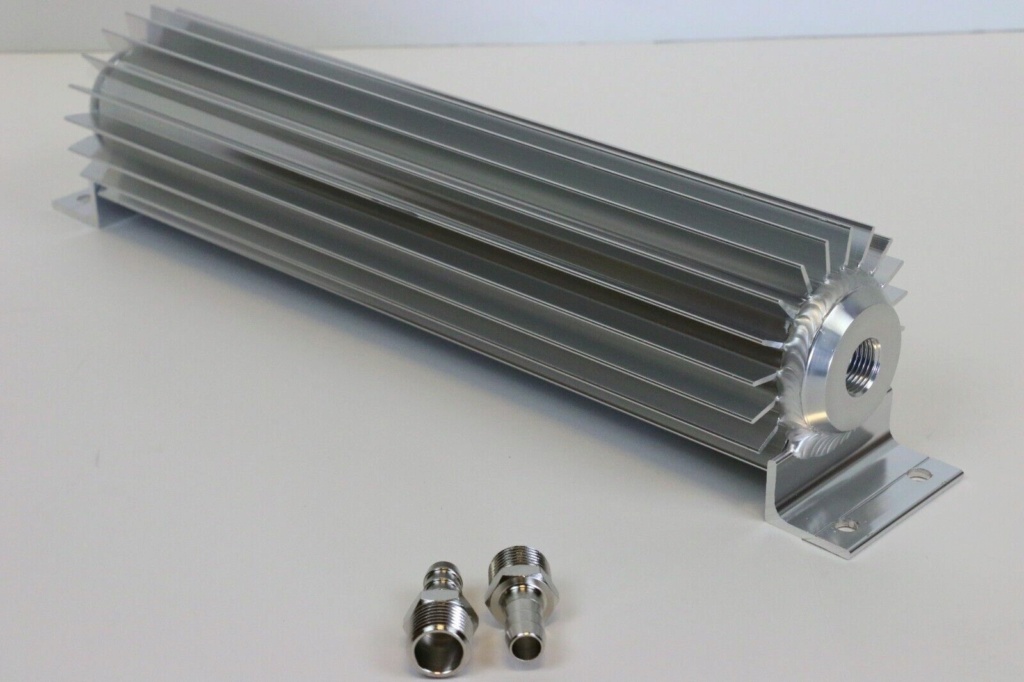



I pulled the return line off he factory warmer, and used a coupler
to leave the factory trans line in tact:

Even though the factory return line elbows into the factory cooler,
it was very pliable and shaped well.













I can attest to this as someone who regularly drives in -20C or colder weather around 3 months of the year.VStar650CL wrote: ↑Sun Jun 18, 2023 6:22 amPretty much all the '10x versions have that thermostat, but particularly with the gen2 Rogues, in very cold weather many people here from Canada and the northern US have complained that the car artificially holds low gear ratios for a long time after startup as the tranny struggles to warm up.
Vstar - I just swapped the external CVT cooler on my 2013 from a Hayden 678 (non-bypass straight through) with a 699 (bypass "valve" activates about 165dF). With the 678 it cooled great but took forever to get warm in the winter.VStar650CL wrote: ↑Mon Jun 12, 2023 1:31 pmThe return line is the top one on Nissan side-tank heat exchangers. The engineers claim having the pressure at the bottom and the return at the top makes air bubbles more likely to chase out (not that a healthy pump with sufficient fluid should make many bubbles). So if you're into the lower line from the beehive, it's the pressure line.
This is the factory cooler layout from the 2013 FSM, and this is how I plumbed mine (with a different cooler and just hoses straight from beehive to the cooler). Hose #2 coming from the top of the beehive to the top port on the cooler. Is this correct?VStar650CL wrote: ↑Tue Aug 01, 2023 4:23 amThere are no concerns about it venting, there's a weird looking hose that comes out next to the airbox that vents atmosphere to the tranny case. The pump should purge itself after a little driving, but if you keep seeing bubbles then it's a worry. Been awhile, but I don't think that's right about the fluid lines. I recall with the retro kits the bottom/front fitting definitely went to the bottom of the cooler, and Nissan normally engineers everything with the fluid bottom-up, specifically so buoyancy can help the pump chase out any bubbles that form. So I'm pretty sure the top/back fitting is the return. The H-valve in the cooler won't work right if it's plumbed backward, so you should pull a hose and double check.

I appreciate your expertise VStar buddy.VStar650CL wrote: ↑Tue Aug 01, 2023 12:13 pmThat's the retro kit I was talking about. Nissan plumbs all (to my knowledge) of their factory CVT coolers and exchangers bottom-up, so I'm pretty sure 11 is the pressure side and 2 is the return. Like I said, your cooler won't work if the inlet and outlet lines are reversed (it will constantly bypass and the 'stat will never open). The inlet has to be connected to pressure and the outlet has to go to return. So you'd be well served to pop a line loose and check it, I'm fairly sure it's backward.